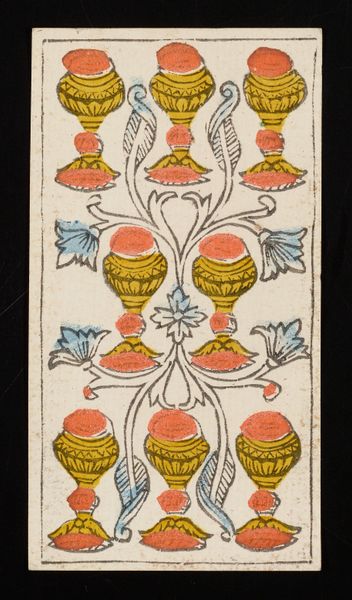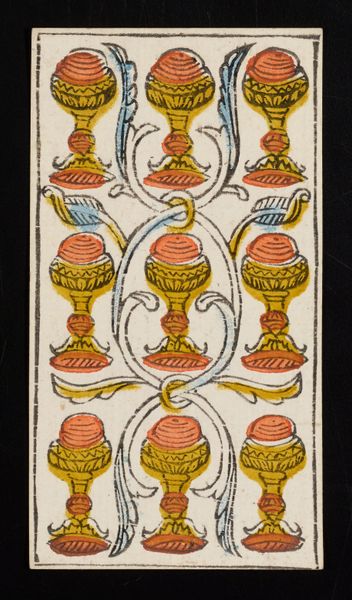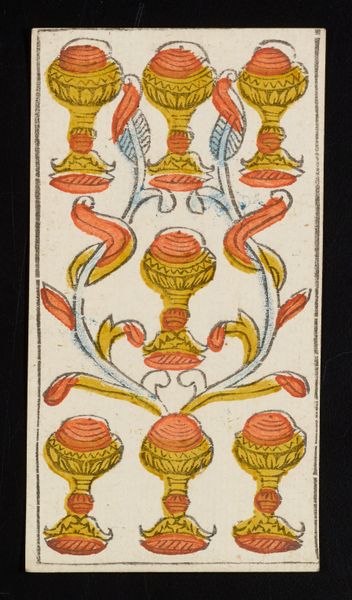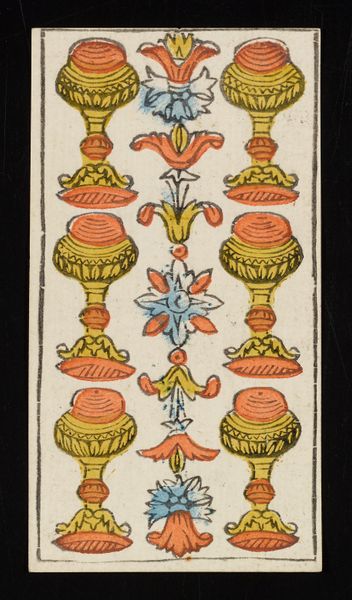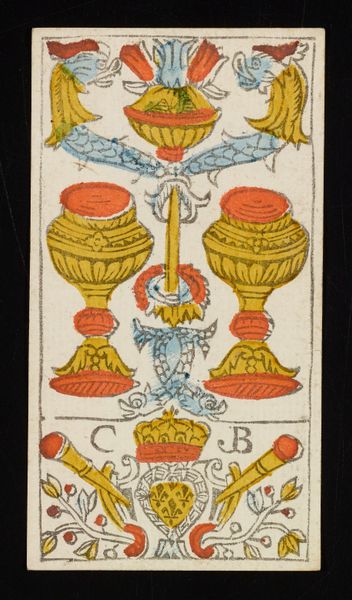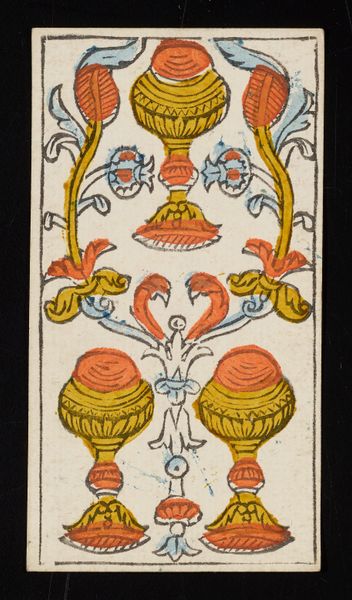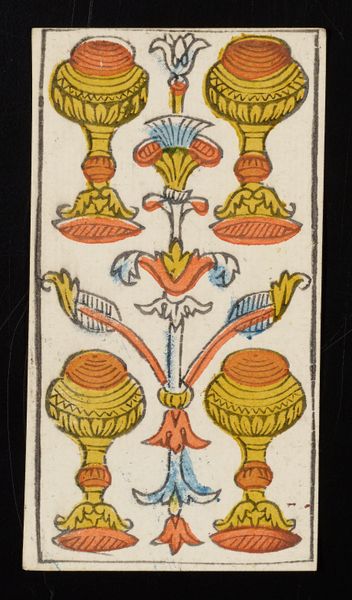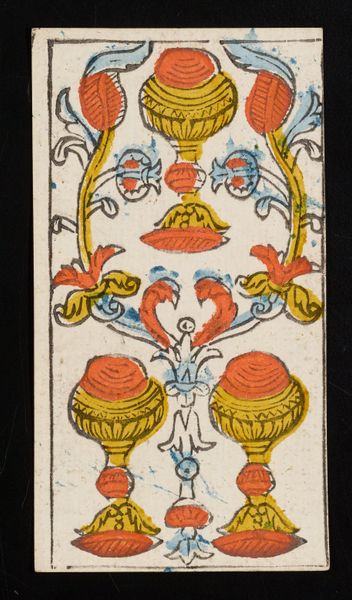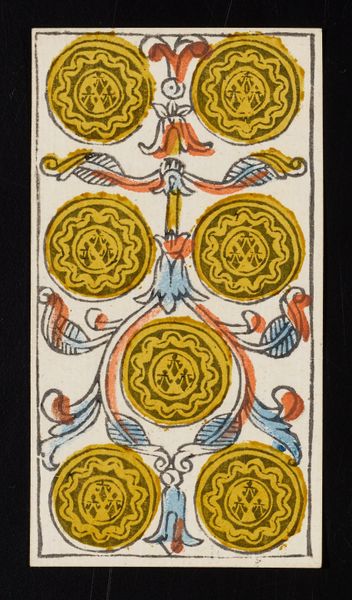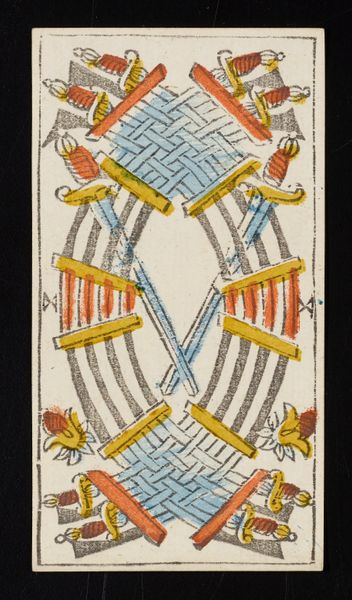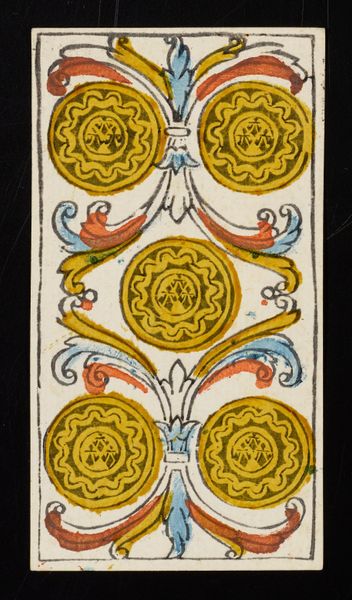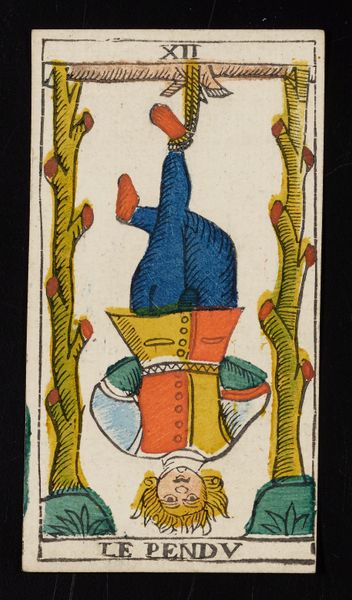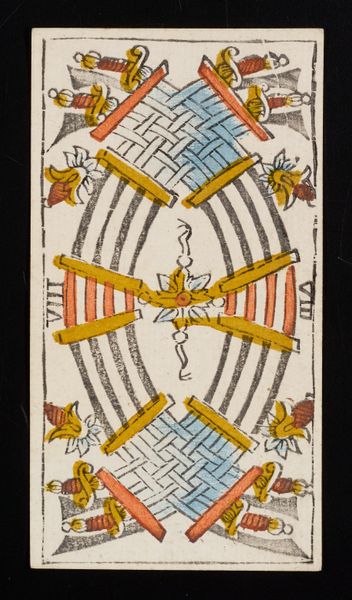
tempera, print
#
tempera
# print
#
geometric
#
miniature
Dimensions: 4 7/16 x 2 7/16 in. (11.27 x 6.19 cm) (image, sheet)4 5/8 x 2 1/2 in. (11.75 x 6.35 cm) (sheet, each)
Copyright: Public Domain
This is the Ten of Cups, made by Claude Burdel, a Swiss engraver, around the late 18th century, using woodcut and stencil. Tarot cards were not simply tools for divination. They were also cultural objects, reflecting the values and beliefs of the society that produced them. The Ten of Cups, with its imagery of domestic harmony and emotional fulfillment, speaks to the emerging bourgeois ideals of family and home in 18th-century Europe. But this was also a period of social upheaval, as the French Revolution challenged traditional hierarchies. Did the rise of tarot reflect a desire for personal control in an uncertain world? To fully understand these cards, we must consider the economic structures that made their production and distribution possible. Research into the history of printmaking, trade routes, and popular culture can shed light on the complex meanings embedded within these seemingly simple images. The interpretation of art is always contingent on its historical context.
Comments
No comments
Be the first to comment and join the conversation on the ultimate creative platform.
